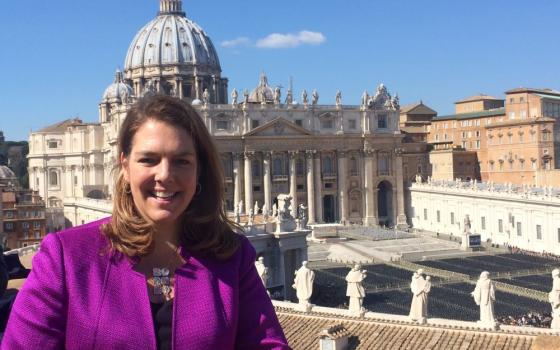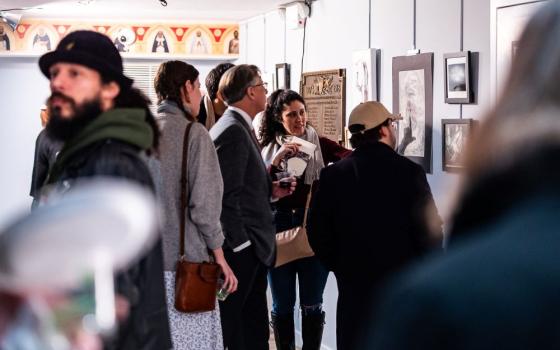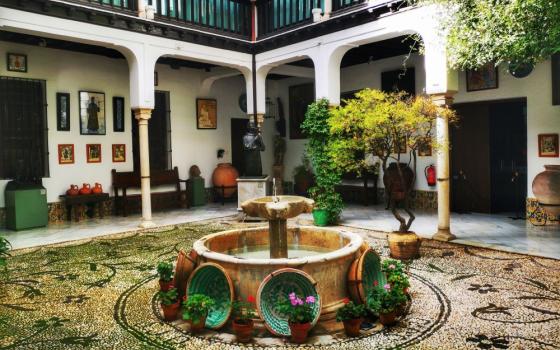I wasn’t on the ground in Washington D.C., New York or Philadelphia during Pope Francis’ trip to the United States. Instead I assigned myself a much harder task: to consume and review the media coverage of the papal visit.
I read articles, watched television, monitored Twitter and even listened to conservative talk radio. That last one was pretty painful.
Let me start by saying that most of the coverage by the Catholic media--NCR included, of course--was excellent. I was proud to see so many colleagues reporting or commentating with nuance and depth, covering the pope’s visit not just as a political or celebrity story, but as a religion one with ramifications for people’s spiritual lives.
The rest of the coverage, however, had its ups and downs.
First of all, what we saw over the last week was definitely an example of “pack journalism,” in which hordes of reporters descend upon a single happening and pretty much report the same thing. Journalists in line at the Capitol at 5 a.m. Thursday for the pope’s historic address to Congress uploaded on social media photographic evidence of the actual “pack.”
With the congressional address (and most other events) live-streamed, however, it wasn’t necessary to actually be inside the chambers to report or offer commentary. Most of the straight news reports, though perhaps emphasizing different aspects of the pope’s talks, were similar. But anyone could be a commentator, and smaller media outlets often gave events a local angle by having a cleric give his two cents.
And most commentators were ordained, or at least men. It would be interesting to analyze the tens of thousands of news article and clips produced throughout the weeklong trip. I have not completed such a comprehensive study, but my initial impression is that the coverage--and definitely the commentary--was male dominated. Part of this imbalance stems from the tendency of media to rely on “experts,” who in the case of this story are assumed to be clergy. For example, I thought Charlie Rose could have done better than two priests and two laymen for his in-depth discussion of the pope’s visit.
The importance of visuals in today’s journalism also was evident in the types of papal stories that went viral. The video of young girl who broke through the security barrier in Washington D.C., only to be lifted up to the popemobile was typical. (She turned out to the daughter of undocumented parents.) So was the one of the young man with cerebral palsy, who received a blessing from Francis at the Philadelphia airport.
These two incidents featured at least two important news values: they were unexpected or unusual, and they were emotional. In both cases, the interactions were unplanned, and both left many viewers--this one, included--a little teary-eyed. And of course, they were both captured on video. Words-only reports, in these cases, would not have been as gripping.
Attention to other news values such as timeliness (constant, immediate coverage), proximity (the visit to U.S. cities covered more heavily than the Cuba leg) and prominence (the pope as “rock star” celebrity) was evident. But the granddaddy of all is conflict.
When I teach news values to journalism students, I point out that “everyone getting along” is not news, though in the case of a feel-good story like a papal visit, such lack of conflict is acceptable, even lauded. Still, most mainstream media--and definitely the partisan media, whether religious or secular--emphasized the conflict angle.
Protests were covered, and the pope’s every word or action was parsed for any hint of his thoughts on hot-button issues, such as gay marriage or climate change. But it was in the commentary where the “conflict” news value was most evident. Predictably, right-leaning pundits blasted the pope for being too liberal, while left-leaning commentators found fault with his more conservative positions. Those in the middle did the so-called “objective” compromise of giving a voice to each side.
Despite these limitations--many of which are inherent in way the media operate these days--much of the news coverage was decent, with reporters trying their best to report on a topic with which many of them are unfamiliar. Slips like the pope “giving” Mass happened, as did surface analyses that did not take into account the complexity of a 2,000-year-old, worldwide religion.
In the end, most church insiders were happy that the mainstream media gave the Catholic Church so much and so positive--at least comparatively: think sex abuse--coverage. I thought some of the advance analysis pieces were especially well done.
But it was a religion story, after all, and thus still relatively low on the media’s priorities. Although a fair amount of world news was ignored during the media papal love-fest, priorities became clear when House Speaker John Boehner made his surprise announcement in the middle of the pope’s visit. While some TV stations went to a split screen to cover both stories as they broke, others pulled back on their pope coverage. In the end, politics trumps the pope--and I don’t mean Donald.




